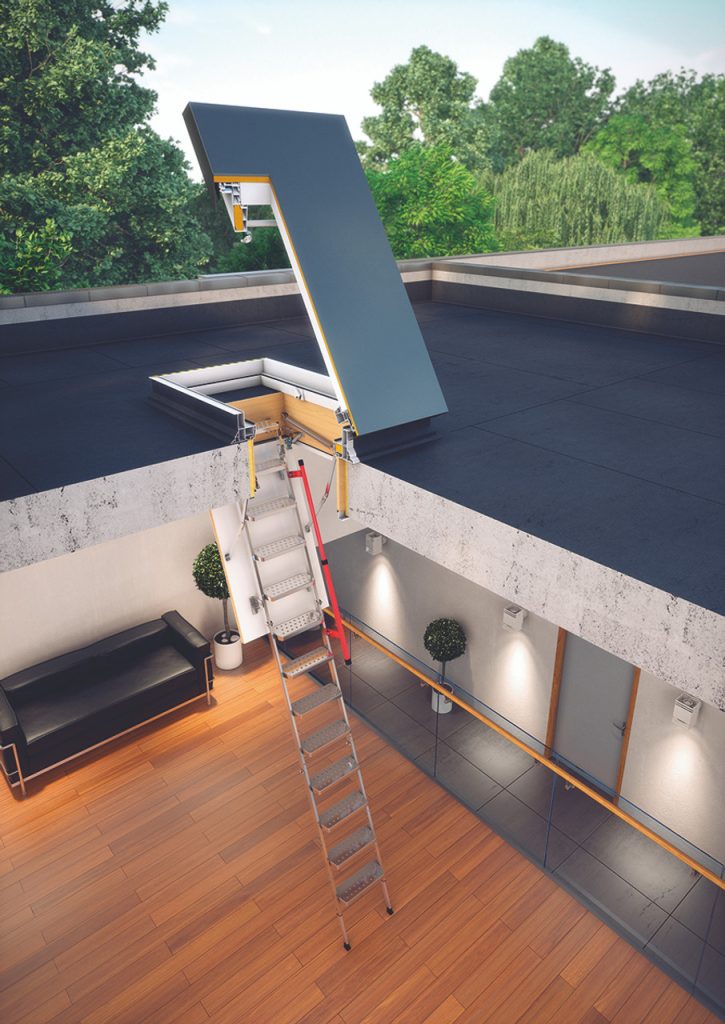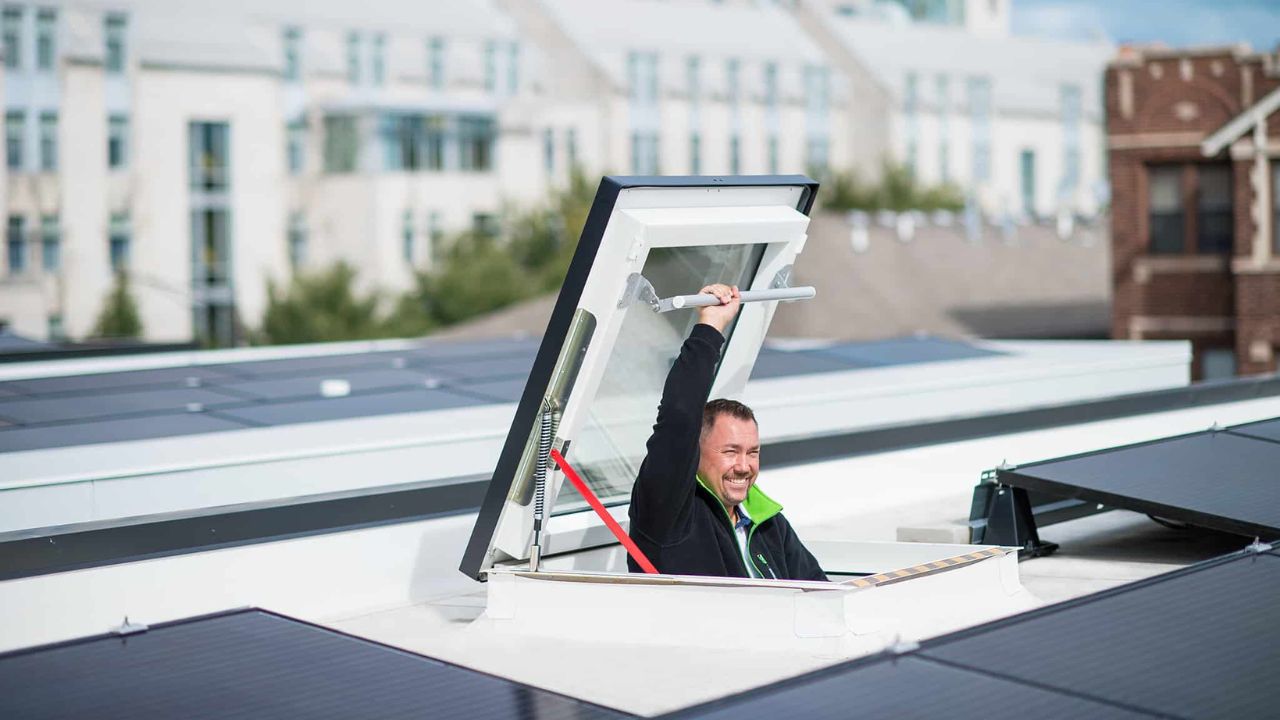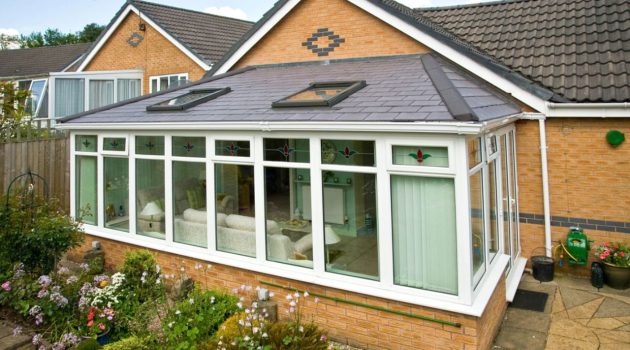Easy access to flat rooftops is paramount, especially for those responsible for your commercial building project’s upkeep and repair, like technicians and maintenance specialists.
Whether for executing routine inspections or promptly addressing leakage issues, roof hatches or flat roof access doors are the industry’s best solution.
An adept roof door panel must foster these professionals’ mobility and productivity and secure their safety.
In this blog article, we’ll explore these innovative flat-roof entryways, their roles in enhancing the roofing’s accessibility, and the various types you can consider installing.
12 Pivotal Roles of Flat Roof Access Doors in Your Commercial Project

Flat roof access doors are critical to improving roofing accessibility in commercial building projects. Presented below are the fundamental reasons:
1. Safety
Roof hatches significantly minimize the fall and injury risks associated with carrying equipment to and from the roof.
By providing an open and easily accessible access point, you can prevent the employees from accidentally losing balance or dropping construction tools or equipment.
Some entryways, like the Fakro DRL flat roof access door, even feature an anti-slip cover on the frame to guarantee the employees’ secure footing in slippery or wet conditions.
2. Efficiency
Properly placing flat roof access doors diminishes the contractors, technicians, and maintenance specialists’ travel time across your project’s roofing surface.
Experts highly recommend installing this specialized component near work areas to let these professionals spend more of their productivity time on tasks rather than walking or climbing back and forth.
3. Flexibility
Roof hatches are available in various door sizes, allowing contractors to comfortably bring all needed tools, supplies, and other utilities onto the rooftop.
It helps eliminate downtime, specifically when waiting for huge equipment to fit through the available entry points.
4. Weather Protection
Installed roof hatches incorporating threshold curbs produce dependable, weatherproof access, especially compared to unstable ladders.
It protects your building project’s interior and stored elements year-round from water hazards.
5. Planning
Considering flat roof door installation in the initial stage of construction planning and project scheduling dodges accessibility problems that can delay installations or upkeeping, enabling you to address entrance insufficiency as promptly as possible.
6. Compliance
Providing adequate and comfortable roof access adheres to the safety compliance by OSHA and other authority regulations that demand fall protection barriers getting onto low-slope roof areas.
With roof hatches, you’re swiftly eradicating non-compliant vertical entry risks.
7. Emergency Access
One of the most important roles of access doors is to grant firefighters and other emergency medical technicians an instant way to transport equipment for emergencies, including hoses or stretchers, directly onto the roof without bringing these tools up unsecured ladders.
It also helps you save critical time, especially during emergency response situations.
8. Curb Appeal
In commercial building aesthetics, decorating a roof with metal doors blends seamlessly into the flat roof’s environment without disturbing the roofing lines.
It flawlessly keeps a professional impression compared to temporary and weak ladders, which can appear haphazard.
9. Building Security
Your roof hatch purchase often comes with tightly secured locks and opening restrictors, helping your client control and facilitate every roof access point.
It’s an effective tool to restrict unwarranted individuals from easily accessing equipment or entering using dangerous ladder openings.
10. Resale Value
Code-compliant flat roof entry systems with functional access doors can boost your client’s commercial establishment functionality.
These vital features can grab potential buyers’ attention, indicating longevity and low-maintenance design.
11. Rooftop amenities
Flat roof access doors give welcoming access to your client’s occupants and employees rather than simply restricting options only reachable by ladder.
It helps you extend outdoor areas further and maximize its usability and benefits. Some retail spaces increase their roofing function by adding greenery or patios.
12. Sustainability
Durable and eternally attached flat roof access doors encourage multi-purpose entry, ultimately generating lesser long-term waste from the constant replacement of temporary and poor-quality ladders.
READ MORE: 7 Tips for Proper Roof Maintenance
Flat Roof Access Door Types You Can Consider Installing

Regarding roof hatches for your commercial project’s flat roofing, you’ll see tons of options in the market.
However, below are some of the most highly recommended flat roof door products that you can consider installing:
- Utility Flat Roof Access Doors: These are ideal if you’re searching for oversized options to haul large facilities, material packages, or multiple workers together.
- Hatch Flat Roof Access Doors: They provide removable top sections on machinery hatches, enabling you to improve the ventilation for interior spaces below.
- Curbed Flat Roof Access Doors: These include a site-built curb with a weather-sealed threshold that produces sturdy, permanent applications.
- Fire-Rated Flat Roof Access Doors: Special heat or flame-resistant flat roof access door models comply with primary regulations where rooftop utility sites require fire perimeters.
Conclusion
Flat roof access door placement can remarkably improve workers’ safety and showcase your commercial building project’s efficiency.
This way, you can focus more on the job instead of dealing with the struggles of using temporary access methods.
With that in mind, thoughtful door selection as part of a roof’s initial planning guarantees long-term accessibility compliance and overall operational use of roof assets.
Weigh in your door type options and choose the most suitable for your specific structure applications to upgrade the performance of every roofing task from installation to ongoing maintenance.



